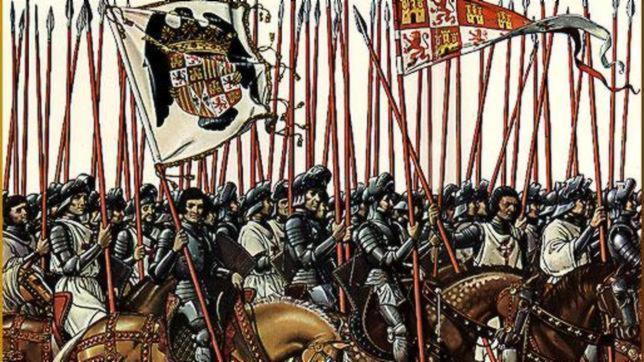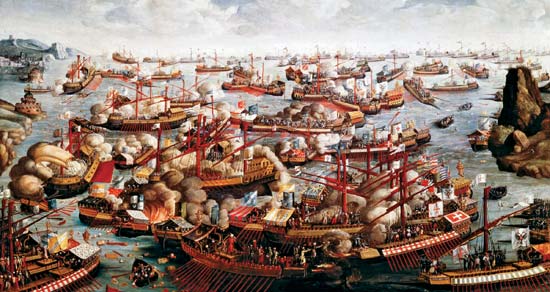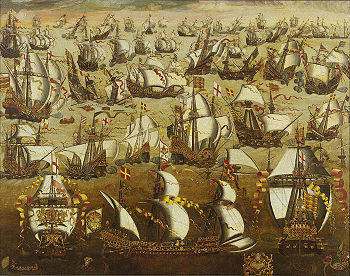Social Sciences

 social-sciences/social-sciences-565bbbea7a709.jpg
social-sciences/social-sciences-565bbbea7a709.jpg


- Tuesday 19th November 2015
Hi everybody!! Today in social sciences we reviewed what we studied the previous class about the Spanish Succession War. We reviewed about the development of the war and when the Emperor of Austia died, the Archduke Charles became Emperor....
- This Day In History: Birth Of Francisco Zurbarán And The Beginnig Of The Revolt Of The Comuneros.
Hi, I?m Carlos and it?s my turn to write in the section ?this day in history?. I am going to explain you the birth of Francisco Zurbarán and the beginning of the Revolt of the Comuneros. FIRST EVENT: THE BIRTH OF FRANCISCO ZURBARÁN. Francisco...
- This Day In History: Charles V's Abdications
Hello I'm María, today I'm going to explain Charles abdications and later life. Today but 450 years ago Charles V abdicated his German possessions and the title of emperor on his brother Ferdinand. Charles abdicated the parts of his empire...
- 22nd Of September 2015
Hi! I'm Manal, and today I'm going to explain you what we have learnt in social sciences.At first, Paqui has showed us a Charles' family image, to understand better his family, because they married with people of their own family, so...
- Presentation And Family Tree
Here you have the presentation about the Hispanic Momarchy during the 16th and 17th centuries: And this is the family tree of the Hispanic Monarchs, starting from the Catholic Monarchs until Philip V. As you can see, endogamous relations...
Social Sciences
Thursday, 24 of September
Today in social sciences we have continued with the explanation of Philip II's life.
As we studied in the last class, Philip was the son of Charles I.
Philip wanted to preserve his Empire and this led to several wars.
-Wars against France. It was the primarily fought between French Catholics and Protestans ( Huguenots). The French were defeacted in the battle of Saint Quentin in 1557, but Philip continued to interfere in France, he took part in the wars of religion, supporting the Catholic.

http://static1.1.sqspcdn.com/static/f/477209/5066065/1260829651757/awm01.jpg?token=i8jdvjrhlmys4k2IRRI%2F7NiE9Zg%3D
- Revolt in the Low Countries. Authoritarianism of the government and religious policy provoked a revolt against the king in the Northern Provinces (present Holland). There was discontent in the Netherlands about Philip's taxation demands, and the increasin persecution of Protestants, which declared the independence. The conflict lasted 80 years and it wasn't solved until 1648.

-Confrontation with the Ottoman Turks. The Ottoman Turks threatened the Mediterranean and a coalition was organized to confront them. In 1558, Turkish admiral Piyale Pasha captured the Balearic Islands, especially inflicting great damage on Minorca and enslaving many, while raiding the coasts of the Spanish mainland. Philip appealed to the Pope and other powers in Europe to bring an end to the rising Ottoman threat. Since his father's losses against the Ottomans and against Hayreddin Barbarossa in 1541, the major European sea powers in the Mediterranean, namely Spain and Venice, became hesitant in confronting the Ottomans. The myth of "Turkish invincibility" was becoming a popular story, causing fear and panic among the people. The Holy League defeated the Turks in the Battle of Lepanto in 1571.

social-sciences/social-sciences-565bbbeaf37d2.jpg
- Conflict with England. The English supported the Protestants and their corsairs attacked the fleets that came from the Indies and thevitalise the Roman Catholic Church in England. With her death, Philip lost his rights to the English throne (including the ancient English claims to the French throne) and ceased to be King of England, Ireland and (as claimed by them) France. Upon Mary's death, the throne went to Elizabeth I. Philip had no wish to sever his tie with England, and had sent a proposal of marriage to Elizabeth. However, she delayed in answering, and in that time learned Philip was also considering a Valois alliance. Elizabeth I was the Protestant daughter of Henry VIII and Anne Boleyn. This union was deemed illegitimate by English Catholics who did not recognise Henry's divorce and who claimed that Mary, Queen of Scots, the Catholic great granddaughter of Henry VII, was the legitimate heir to the throne.
For many years Philip maintained peace with England, and even defended Elizabeth from the Pope's threat of excommunication. This was a measure taken to preserve a European balance of power. Ultimately, Elizabeth allied England with the Protestant rebels in the Netherlands. Further, English ships began a policy of piracy against Spanish trade and threatened to plunder the great Spanish treasure ships coming from the new world. English ships went so far as to attack a Spanish port. The last straw for Philip was the Treaty of Nonsuch signed by Elizabeth in 1585 ? promising troops and supplies to the rebels. Although it can be argued this English action was the result of Philip's Treaty of Joinville with the Catholic League of France, Philip considered it an act of war by England. Indies. Philip II decided to invade England and he prepared a big navy, the Invincible Armada but the Armada sunk in 1588.Philip's father arranged his marriage to 37-year-old Queen Mary I of England, Charles' maternal first cousin. To elevate Philip to Mary's rank, his father ceded the crown of Naples, as well as his claim to the Kingdom of Jerusalem, to him. Philip and Mary appeared on coins together, with a single crown suspended between them as a symbol of joint reign. The Great Seal shows Philip and Mary seated on thrones, holding the crown together The coat of arms of England was impaled with Philip's to denote their joint reign. Mary died in 1558.

social-sciences/social-sciences-565bbbeb61f72.jpg
All these wars were very expensive and they ruined the economy. Philip was forced to declared bankruptcy several times.
We have also studied the economy in the 16th century.
The economy experienced was a price revolution provoked by the arrival of big amounts of precious metals from the Indies. Prices increased because there was not enought production to satisfy the demands.
New vocabulary.
Banish-desterrar
Matter-asunto
Bloody- sanguinario
Bogeyman- hombre del saco, el coco.
Huguenots- hugonote.
Fleet-flota
West Indies fleet- flota de Indias
Privateer- corsario
Carte blanche- patente de corso.
Go bankrupt-ir a la bancarrota
Default- quiebra
Creditor- acreedor
Restructure the debt- restructurar la deuda
Ally- aliado
Run out of money-quedarse sin dinero
Selfish-egoísta
Shellfish- moluscos
Owe- deber.
- Tuesday 19th November 2015
Hi everybody!! Today in social sciences we reviewed what we studied the previous class about the Spanish Succession War. We reviewed about the development of the war and when the Emperor of Austia died, the Archduke Charles became Emperor....
- This Day In History: Birth Of Francisco Zurbarán And The Beginnig Of The Revolt Of The Comuneros.
Hi, I?m Carlos and it?s my turn to write in the section ?this day in history?. I am going to explain you the birth of Francisco Zurbarán and the beginning of the Revolt of the Comuneros. FIRST EVENT: THE BIRTH OF FRANCISCO ZURBARÁN. Francisco...
- This Day In History: Charles V's Abdications
Hello I'm María, today I'm going to explain Charles abdications and later life. Today but 450 years ago Charles V abdicated his German possessions and the title of emperor on his brother Ferdinand. Charles abdicated the parts of his empire...
- 22nd Of September 2015
Hi! I'm Manal, and today I'm going to explain you what we have learnt in social sciences.At first, Paqui has showed us a Charles' family image, to understand better his family, because they married with people of their own family, so...
- Presentation And Family Tree
Here you have the presentation about the Hispanic Momarchy during the 16th and 17th centuries: And this is the family tree of the Hispanic Monarchs, starting from the Catholic Monarchs until Philip V. As you can see, endogamous relations...
